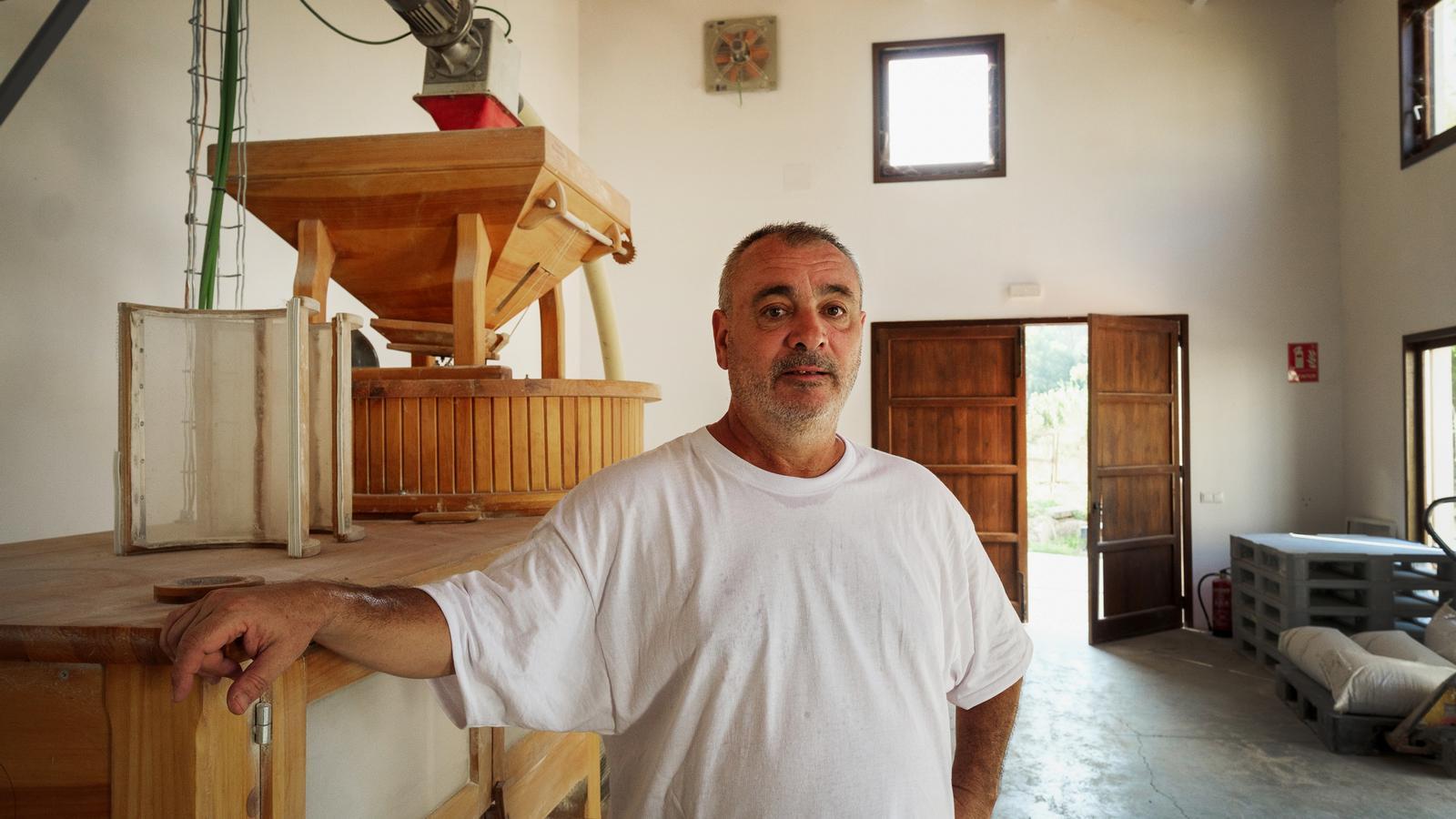"Agricultural aid shouldn't even exist; farmers should be paid a fair price."
Santi Olivé, from Can Jornet de Gallecs, is one of four farmers in Catalonia who makes flour with ancient wheat in a traditional stone mill.


GaliciansIn the middle of a nest of highways, industrial parks, and densely populated urban centers in the Barcelona metropolitan area, there is an agricultural refuge with a farmhouse guarded by Blanqueta, a sleepy dog. From the garden of Can Jornet, where the Duñach family has lived since the 17th century, the chirping of crickets is periodically drowned out by the hum of tires on the asphalt. Since his uncle died thirteen years ago, Santi Olivé Duñach has lived in the house and farmed its land. But although his great-grandfather bought the farm they had always worked on at the beginning of the 20th century, he is not the owner, not even the tenant farmer. "I can't take out a loan or mortgage because this isn't mine," he laments.
Can Jornet is located in the Gallecs agricultural park, a green lung wedged between the intersection of the C-59 with the AP-7 and the C-155, one of the last undeveloped spaces in Baix Vallès. The 1,500 hectares that made up the park were expropriated in the 1970s, at the end of the Franco dictatorship, to build a mega-city "like Badia del Vallès," which was never built due to the persistence of the residents. "Some left, but others continued to live," explains Santi.
With the arrival of democracy, the land fell into the hands of the Catalan Institute of Land, which, instead of returning it to its owners, issued permits authorizing its use to the residents, but not to their families. This meant that when Santi's grandmother retired, like so many other farmers, her heirs were left in a kind of administrative impasse. And while the joint efforts of neighbors and the administration have allowed the park to gradually gain protection, there are still steps to be taken to fully regularize the land. "We're like an Indian tribe," he says ironically. "We have everything at hand, but you see, there's nothing here."
Santi is one of four farmers in Catalonia who makes flour from ancient wheats in a traditional stone mill. These varieties—such as cage, spelt, and kamut—have been phased out because they were half as productive as conventional wheat, but have a much higher nutritional value. In fact, he explains that many people who are gluten intolerant can eat them and find them digestible: "It's not the gluten. It's the gluten that [the ancient wheats] provide, which is more easily assimilated."
Cultivating heirloom seeds helps preserve the biodiversity of these species, as is the case with Montjuïc, a typical wheat from Vallès. Farmers in the region had replaced it with other, more productive varieties. "There were only 100 kilos left unplanted at the Torre Marimon in Caldes de Montbui," he explains. He and his neighbor planted the crop last year and have now recovered it.
He strongly defends the organic farming model, but laments that the work of farmers is not highly valued socially despite its key role: in addition to helping preserve biodiversity, farmers are also essential when it comes to preventing fires: "We are on the front line," he says.
The endemic evil of the profession? The middlemen. "The big distributors, if you sell them [the product] for 20 cents, screw you for two euros," says Santi. "The system is set up to favor them." In fact, he claims that if the intermediaries' margins were smaller, the current system of public aid to support farmers wouldn't be necessary: "The CAP shouldn't even exist. Producers should be paid a fair price." In this sense, he believes it's necessary to incentivize local consumption and direct purchases from producers. But he's lenient with consumers, on whom the entire responsibility often falls: "They should be more aware of the local situation, but in the world we live in, it's very difficult. Everyone carries bulk, and if you go to a supermarket, you have everything there."
